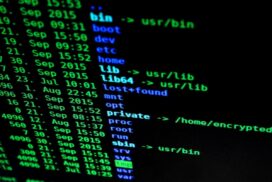Best Tools & Practices for Maintaining Your Audio Hardware, Recording, and Playback
Maintaining your audio equipment is crucial for achieving high-quality recordings and playback. Whether you’re an audio professional, a musician, or a hobbyist, regular care of your gear ensures it performs optimally and lasts for years. By taking proper precautions and using the right tools, you can preserve the fidelity of your equipment and make your recording sessions seamless. If you’re also looking for a way to capture sound directly from online platforms, check out this detailed guide on how to record audio from a website.
Why Maintenance Matters for Audio Equipment
Audio hardware, whether analog or digital, is a precision tool. Proper maintenance directly impacts the quality of recordings and playback. For example, studies reveal that neglected audio equipment can result in a 20-30% loss in sound clarity due to issues such as dirt accumulation and poor calibration.
Additionally, the cost of replacing damaged gear can be steep—high-quality microphones, mixers, and monitors can cost upwards of $500 to $3000. Maintenance is a cost-effective way to ensure longevity and avoid the need for frequent repairs or replacements. Beyond financial savings, it ensures you have reliable gear ready to perform when you need it.
Essential Maintenance Practices for Audio Hardware
Caring for audio equipment involves consistent cleaning, proper storage, calibration, and troubleshooting. Implementing these practices will help protect your investment and maintain the quality of your recordings.
Regular Cleaning and Inspection
Dust and grime are your equipment’s worst enemies. Regular cleaning can prevent these contaminants from causing malfunctions or degrading sound quality. Here’s why regular cleaning is vital: dirt and dust not only affect sound clarity but can also lead to overheating in gear with active cooling systems.
Follow these best practices:
- Use microfiber cloths to gently clean surfaces, preventing scratches and smudges.
- Compressed air is excellent for clearing debris from crevices and tight spaces.
- Isopropyl alcohol (90% or higher) safely cleans connectors, ensuring optimal electrical conductivity without leaving a residue.
For instance, audio engineers recommend cleaning your gear after every session in dusty environments to reduce long-term wear. Additionally, routine inspections for loose cables, frayed wires, or oxidation in connectors can help you identify and address minor issues before they escalate.
Proper Storage to Extend Longevity
Correct storage practices are vital to prevent environmental damage. Storing your gear in a controlled environment keeps it safe from moisture, temperature fluctuations, and accidental impact. Consider these tips:
- Control humidity: Excessive moisture can corrode metal components and damage internal circuits. Use a dehumidifier or silica gel packs to keep your storage area dry.
- Invest in protective cases: High-quality cases or bags safeguard equipment from dust, scratches, and shocks during transportation.
- Organize cables properly: Avoid bending or over-tightening cables, as this can damage the wires inside. Use Velcro straps or cable organizers to keep them neat.
Improper storage can lead to issues such as warped components in speakers or brittle insulation on cables, both of which are costly to repair. Investing in a dedicated, safe storage area protects your gear in the long term.
Calibration for Accurate Performance
Calibration is particularly important for analog equipment, such as mixers, tape machines, and preamps, as well as digital tools like audio interfaces. Regular calibration ensures accurate sound reproduction and optimal performance.
For example, using tools like tone generators and audio analyzers allows you to fine-tune your setup. Software like Room EQ Wizard (REW) can optimize playback systems by analyzing acoustic responses in your studio. This step is critical for achieving consistent and professional-quality results in recording and mixing.
Many manufacturers also recommend recalibrating studio monitors at least once a year to account for environmental shifts that might impact sound perception.
Tools That Simplify Maintenance and Recording
The right tools make maintenance more effective and recording sessions smoother. From cleaning to diagnostics, here’s a curated list of must-have items.
Cleaning and Maintenance Tools
These tools will help you keep your equipment clean and functional:
- Microfiber Cloths: Protect delicate surfaces from scratches.
- Contact Cleaner Sprays: Ideal for cleaning electrical connectors and switches.
- Cable Testers: Identify and troubleshoot faulty cables to avoid unexpected issues during a session.
- Dehumidifiers: Reduce moisture levels in storage areas to prevent corrosion and mold.
- Rack Mounts: If you own rack-mounted equipment, proper organization and ventilation are crucial for avoiding overheating.
Using these tools ensures that your equipment stays in top shape, avoiding unnecessary interruptions during critical projects.
Recording and Playback Optimization Tools
Achieving seamless recording and exceptional playback requires not only well-maintained hardware but also the right set of tools. From capturing crystal-clear audio to delivering accurate sound reproduction, these solutions streamline your workflow and significantly improve the overall quality of your audio projects.
Bluedot: A Versatile Solution for Online Audio Recording
Bluedot is an invaluable tool for recording audio directly from websites or online meetings. It offers a straightforward way to capture, transcribe, and organize recordings with minimal effort. Bluedot’s key features include:
- Real-Time Transcription: Automatically converts recorded audio into text, saving hours of manual transcription.
- Cross-Platform Compatibility: Works effortlessly on various devices, ensuring that you can record on the go.
- Seamless Integration: Syncs with popular productivity tools like CRMs and Notion, making it easy to manage and share recordings.
For professionals who frequently capture inspiration, meetings, or lectures online, Bluedot is a game-changer. For detailed instructions on how to use it, visit their guides.
Pro Tools: Industry Standard for Recording and Editing
Pro Tools by Avid is the gold standard for audio production. Trusted by professionals worldwide, it combines powerful editing capabilities with seamless hardware integration. Key features include:
- Non-Destructive Editing: Make changes without altering your original recordings.
- Advanced Mixing Options: Access comprehensive tools for fine-tuning every aspect of your audio.
- High-Resolution Audio Support: Work with recordings at the highest quality for detailed soundscapes.
Pairing Pro Tools with audio interfaces like Universal Audio Apollo ensures premium sound quality during both recording and playback.
OBS Studio: Recording and Streaming Flexibility
For those working with multimedia projects or live streaming, OBS Studio is a free and powerful option. Its versatility makes it an excellent choice for capturing audio alongside video. Features include:
- Customizable Audio Filters: Add noise suppression, gain control, and EQ adjustments directly in the software.
- Multi-Source Integration: Record audio from various inputs simultaneously, such as microphones and system audio.
- Cross-Platform Functionality: Available on Windows, macOS, and Linux.
OBS Studio is particularly popular among podcasters, streamers, and educators for its flexibility and efficiency.
Izotope RX: Cleaning and Enhancing Audio
Izotope RX is a specialized tool for repairing and enhancing audio recordings. Its suite of features caters to professionals who demand exceptional sound clarity, including:
- De-Noise and De-Click: Remove unwanted noise and clicks with precision.
- Spectral Editing: Visually identify and correct issues within the audio spectrum.
- Dialogue Repair: Perfect for podcasts, film, or interviews, ensuring voices are clear and consistent.
Izotope RX is a must-have for anyone working with raw recordings that require cleaning or enhancement.
Additional Recommendations for Playback Optimization
High-quality playback tools ensure that you can accurately hear your recordings for editing and evaluation. Consider these options:
- DACs (Digital-to-Analog Converters): Devices like the AudioQuest DragonFly improve sound quality when listening on headphones or monitors.
- Studio Monitors: Reliable models such as the Yamaha HS8 deliver flat frequency responses, crucial for accurate mixing and mastering.
- Headphones: The Beyerdynamic DT 770 Pro is a staple for professionals, offering exceptional sound isolation and clarity.
When combined, these tools ensure that both recording and playback processes are smooth, efficient, and professional.
Steps for Maintaining High-Quality Playback
Playback quality is essential for audio analysis, enjoyment, and decision-making in editing. Maintaining playback devices like headphones, monitors, and DACs ensures clarity and precision.
Monitor and Headphone Care
Your headphones and monitors are crucial for accurately hearing your recordings. Proper care includes:
- Cleaning headphone cushions regularly to remove oils and bacteria.
- Replacing worn-out earpads or foam to maintain comfort and sound isolation.
- Avoiding exposure to direct sunlight or extreme temperatures, which can degrade components over time.
Audio Signal Chain Optimization
The signal chain, from your microphone to your speakers, is the backbone of any audio setup. Optimizing it can significantly improve sound clarity. Here’s how:
- Use balanced cables to reduce noise interference.
- Upgrade to gold-plated connectors for better conductivity.
- Routinely check for weak or noisy connections to prevent signal loss.
Taking these steps ensures that your audio system delivers clean, distortion-free sound.
Top Practices for Recording Audio
Recording audio involves more than just equipment—it’s about creating an environment conducive to high-quality results. Proper preparation and setup are key.
Prepare Your Recording Environment
Before hitting the record button, ensure your recording space is optimized:
- Use acoustic panels or blankets to dampen sound reflections and minimize background noise.
- Position microphones at appropriate distances to capture the desired sound characteristics.
- Use a pop filter to reduce plosive sounds, such as “p” and “b” sounds.
This preparation helps capture clear and professional-grade audio.
Manage Your Recording Setup
Efficiently managing your recording process reduces errors and maximizes productivity:
- Test all equipment for functionality before starting a session.
- Adjust gain levels carefully to avoid distortion or clipping.
- Use reliable recording software that supports high-resolution formats for better editing flexibility.
By following these steps, you’ll avoid common pitfalls and achieve consistent results.
Key Takeaways
Maintaining your audio hardware and optimizing your recording and playback processes are fundamental to achieving professional-quality results. By combining regular cleaning, proper storage, and routine calibration, you can prevent technical issues and extend the lifespan of your gear. Incorporating versatile tools like Bluedot for online audio recording, Pro Tools for advanced editing, and Izotope RX for audio enhancement ensures that you’re equipped to tackle any challenge with confidence.
Whether you’re a beginner exploring the basics or a seasoned professional refining your craft, attention to detail and a commitment to consistent care can transform your workflow. From capturing pristine audio to ensuring accurate playback, these practices and tools will elevate the quality of your work. Start applying these strategies today, and your equipment will reward you with years of reliable performance and exceptional results.















